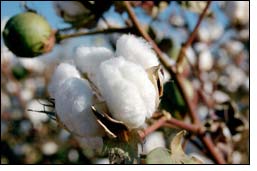NY cotton futures stay within confines of 7-month trend

In the current season, the rest of the world produced a seasonal surplus of 14.4 million bales, with a crop of 85.4 million bales and mill use at 71.0 million bales. A drop of 15% in production due to a significant reduction in plantings (12.8 million bales) and a slight increase in consumption of let’s say 2% (1.4 million bales) would erase the current seasonal surplus and keep stocks at the same level, even if China had its doors firmly shut to all imports.
China will likely continue to import a certain amount of cotton and/or yarn, be it because of the TRQ (tariff rate quota of 894’000 tons) or because attractive yarn and grey cloth prices offer an alternative to expensive domestic cotton prices.
If Chinese mills have less access to cheap imports and are forced to swallow expensive domestic cotton instead, they will continue to lose competitiveness in export markets, which in turn will shift consumption further to places like Pakistan, India, Turkey or Vietnam, just to name a few.
China certainly has a lot of stocks, with Reserve cotton likely to amount to over 9 million tons by the second quarter of next year. However, it is highly unlikely that China will become a net exporter of cotton anytime soon and dump its expensive stocks on a world market that is over 50 cents lower. What is more likely in our opinion is that China is going to reduce its cotton crop (switching to food crops) and then subsidizes the drop in production with its Reserve stocks over the next two or three seasons.
China definitely holds the key to the cotton market going forward and while most analysts believe that the Chinese stock situation is depressing cotton prices, we feel that it is also possible that China creates a vacuum in which international prices trend higher. That may happen if we get a sharp drop in acreage in the rest of the world, while China keeps importing a limited amount of cotton and yarn (let’s say 6-8 million bales), thereby tightening the balance sheet in the rest of the world.
So where do we go from here? Although the bulls may claim a minor technical victory this week, the market remains well within the confines of a 7-month sideways trend. In order to escape from this range, March would have to firmly establish itself above the 78.02 cents high of August 31. We doubt that this will happen over the holiday period, but early next year the market may adopt a more positive outlook as planting discussions enter the picture.
Plexus
































-Ltd..jpg?tr=w-120,h-60,c-at_max,cm-pad_resize,bg-ffffff)





.jpg?tr=w-120,h-60,c-at_max,cm-pad_resize,bg-ffffff)
.jpg?tr=w-120,h-60,c-at_max,cm-pad_resize,bg-ffffff)






